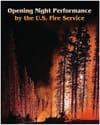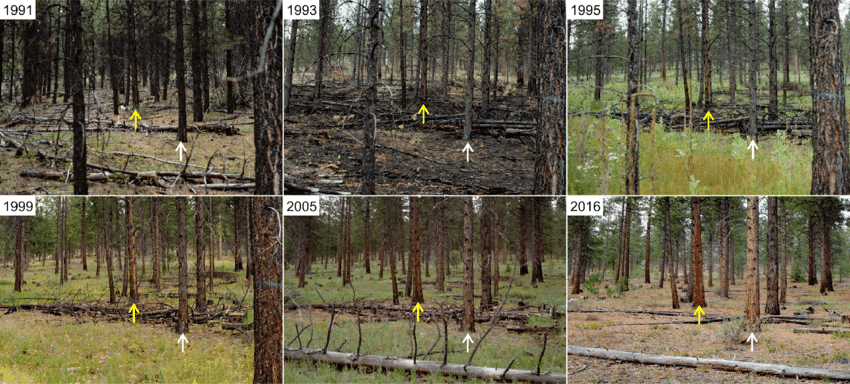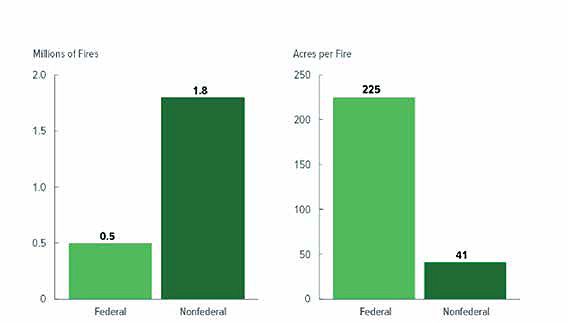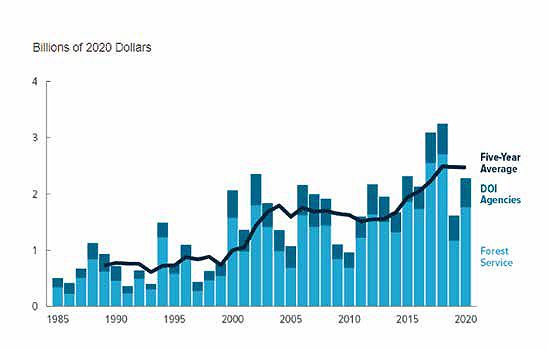The Work Ahead
As we begin the new year, we want to share what Evergreen is focused on — and what it will take

Time to Shelve Prescribed Fire
It’s time for the U.S. Forest Service to shelve prescribed burning until it learns how to use it properly.
The meaning and application of prescribed fire has become so contorted over the last few years that it bears no resemblance to the way it was used by Forest Service foresters for decades.
My long-time friend, Steve Arno, who passed away earlier this month, taught me most of what I know about prescribed fire. He wrote several books about fire and fire management. I have all of them and they’re well documented “must reads” for anyone who wants to understand fire and its use in managed forests.
I first visited Steve’s thinning and prescribed fire research south of Missoula, Montana in 1992. The aptly named Lick Creek Demonstration/Research Forest is located in the Bitterroot National Forest, scene of the disastrous 350,000-acre Bitterroot Fire of 2000 and not far from the mouth of Blodgett Canyon, made famous by Norman Maclean in his novella, USFS 1919: The Ranger, the cook and a Hole in the Sky, one of three novellas included in his magnificent book, A River Runs Through It.
Steve’s work – and that of colleagues from the University of Montana and the Forest Service’s Missoula Fire Sciences Lab – comprise the longest running fuels treatment and restoration study in ponderosa pine in the northern Rockies.
Lick Creek photos that show the result of the combined and proper use of thinning and prescribed fire. They bear no resemblance to today’s lunacy but look very much like what you would see if you visited a similar site on private, state, or tribal forestland.

Today’s Forest Service doesn’t use prescribed fire for its intended purpose because the political pressure from the anti-forestry mob is such that the agency is afraid to do the thinning work that it should do before it adds fire to the mix. It skips thinning and goes directly to…blowtorch forestry. The results are on display in New Mexico.
Tongue in cheek, we assembled the nearby poster – Opening Night Performance by the U.S. Fire Service – from a dramatic night photo of a hotshot crew working the Calf Canyon portion of the Hermits Peak/Calf Canyon fire last week. As of this morning, June 24, 2022 - the fire has burned 341,471 acres. Hermits Creek began as a prescribed fire that escaped its handlers on April 6. Calf Canyon erupted from a January slash burn pile that blew up on April 19.
The two fires – now one monstrosity – bear witness to the fact that years of prolonged drought have turned the Southwest into a tinder box. The Forest Service knows this - but chose to roll the dice anyway.
About two-thirds of what has burned is private, non-industrial land. In legalese, purposefully burning land without owner permission or compensation is known as a “taking.” It is going to cost the federal government a ton of money. It will also be interesting to see how “environmental justice” enters the public debate that will surely begin soon.
On May 10, Forest Service Chief, Randy Moore, issued a formal apology for the agency’s mishandling of Hermits Peak/Calf Canyon. Earlier this week the agency issued a formal report.
Has the Forest Service become the Fire Service? Pretty close. When we interviewed Frank Carroll last week – Blowtorch Forestry Part 2 – he was working on a presentation detailing Forest Service mishandling of New Mexico’s Black Fire. Since then, he has developed a slide-by-slide explanation to accompany the presentation. You can draw your own conclusions about mission drift in the U.S. Forest Service.
The stated Forest Service mission being to “sustain the health, diversity and productivity of the Nation’s forests and grasslands to meet the needs of present and future generations.” Ask yourself what present or future need blowtorch forestry meets? I can’t think of any – and certainly none that could not be more safely met using a combination of thinning and properly used prescribed fire.
Neither Frank nor I have the slightest interest in pillaring wildland firefighters. They have a job to do and they do it well despite not being paid nearly enough for a very dangerous work they do. Even with their congressionally authorized 50 percent pay raise, federal wildfire fighters still make less than pizza delivery drivers here in Coeur d’Alene, Idaho. Equity anyone?
The fact that the Hermits Peak and Calf Canyon fires began as they did should have told someone in the Supervisor’s office in Santa Fe that it was too damned dangerous to start burning for any purpose. It didn’t. Why?
A more sensible approach would have been to grind the slash with a masticator that scatters the resulting chips. Lots of Forest Service research describes how this is done in combination with other silvicultural techniques, much of it pioneered by the late Bob Powers, who authored more than 100 research papers during his years with the Pacific Southwest Research Station at Redding, California.
Bob’s work in California and Steve’s work in Montana provide excellent examples of what the Forest Service should have been doing for the last 30 years. It is much safer and far less destructive than what it the agency is doing today.
Bob and Steve – both PhD’s in forest ecology - saw fire as an excellent forest management tool but neither of them would have ever condoned the way the Forest Service is misusing fire today.

This chart is self-explanatory. It tracks the total number of acres per fire from 1991 to 2021 on federal and non-federal land. Why so many more fires on non-federal land? Because non-federal owners [states, tribes and private] own 69 percent of all forestlands in the U.S. The remaining 31 percent is federal, which means it is jointly owned by our roughly 350 million citizens.
More important is the number of acres burned per fire. It is five times greater on federal land than it is on private land – 225 acres per federal lands fire versus 41 acres per fire on non-federal land. Why? Better forest management – including the proper use of prescribed fire - and a commitment to extinguishing wildfires as quickly as possible. What the Forest Service did for decades.

Forest Service claims to the contrary, there are no ecosystem benefits in wildfires that reach 2,000 degrees on the surface. The soil’s organic layer - in which seeds germinate – is melted into a waxy substance that water cannot penetrate. Hence, flash floods like those that will rush down denuded slopes and gullies when the monsoon season sweeps across New Mexico and Arizona in a matter of days.
Blowtorch Forestry has no place in a society that derives so much pleasure from forests that are well managed, green and growing. Our national forests are dying from neglect and burning in megafires. Do Americans understand what is being lost? Some do – especially here in the rural West - but most don’t.
We will be turning the house lights up as far as they will go this summer. Fires of a different kind.
Jim Petersen, Founder, the non-profit Evergreen Foundation
You 100% tax-deductible subscription allows us to continue providing science-based forestry information with the goal of ensuring healthy forests forever.